This classic recipe for Fig Jam is made with sweet, ripe fruit at the height of their season. It is the ultimate way to preserve this soft and sweet autumnal fruit to enjoy throughout the months ahead. To make this jam, you will use only four ingredients: fresh figs, sugar, lemon juice and just a small amount of water. This is a must-try jam that captures the honeyed sweetness of this special fruit. It is made without the addition of pectin.
It was perfect. I added some finely chopped crystallised stem ginger also, it was delicious.
- Christine
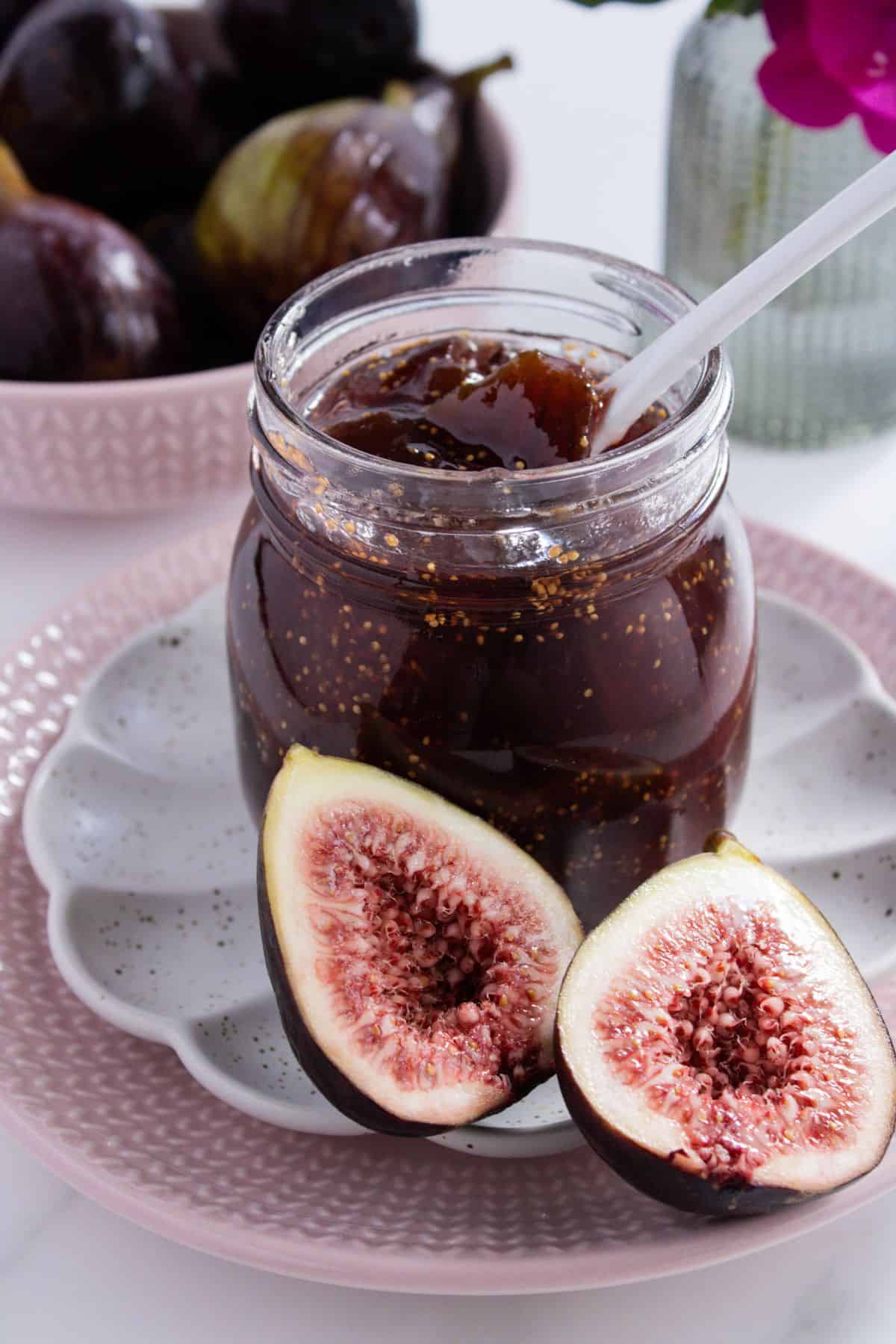
Why You'll Love This Recipe:
- Fig Jam is very easy to make, and having a few jars of this special preserve in your pantry means that you will be able to enjoy one of the delights of autumn far beyond the season.
- You just need to invest a little of your time, but when you finish, and see your own produce lined up, you will know that it was time well spent.
- The jam contains just four ingredients, fresh figs, lemon juice, sugar and filtered water.
- Homemade jam is infinitely superior to shop bought. There are no unwelcome additives, artificial preservatives, or thickeners that you may find in a commercially prepared jam. To me, one of the most important aspects of making your own jam is knowing that you control the quality of the ingredients.
- There are many ways to use this delicious jam, some of which we suggest below.
- You will not need any special equipment to make this recipe. Just a large, wide, non-reactive saucepan and a long-handled wooden spoon to keep your hand away from the boiling jam.
Recipe Inspiration: one of my favourite cooking activities is using fruits and vegetables to make jam, marmalade, pickles, sauces and chutney. Many of the recipes I share date back to my great-great-grandmother. This Fig Jam recipe is also one of my Mum's favourites!
Ingredients and Substitutions:
Please see the recipe card further along in the post for exact quantities of ingredients and the full method.
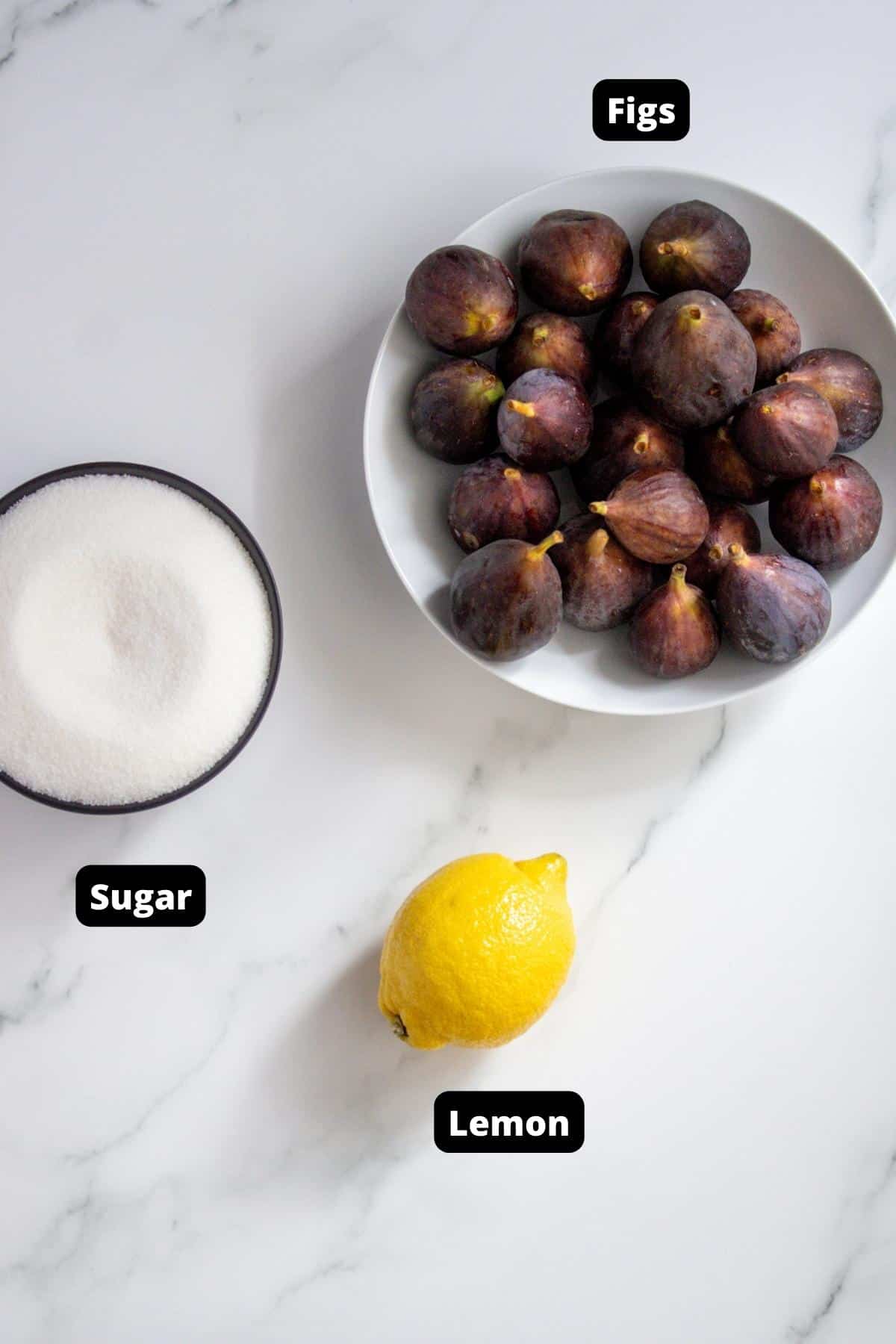
- Figs - to me, a sweet, fresh fig is a luxury fruit; nothing compares with their flavour. They have a short season and are highly perishable. This is a versatile fruit that can be eaten with or without their skin, enjoyed in sweet or savoury dishes, served hot or cold. There are many varieties and their skins range in colour from almost black to brown, dark purple, yellow or green. All varieties are suitable.
Lemon juice - lemon juice has two important functions in jam making. Firstly, lemon juice is acidic and contains pectin, both of which are important in helping the jam to set. Also, the acidity of the lemon juice helps with preservation and balances the sweetness of the sugar.
Sugar - sugar not only adds sweetness, but it also interacts with the acids and pectin, helping the jam to set. Additionally, it has a preservative effect enabling the jam to be shelf-stable to enjoy through the months ahead.
Water - we use a small amount of filtered water to begin the cooking process. Filtered water gives the best flavour, eliminating the taste of chlorine or other products that water may contain.
Variations:
Lemon juice - if you prefer, you can use lime juice instead.
Spices - you could add some ground ginger, cinnamon, or vanilla extract to vary the flavour.
How To Make Fig Jam:
Please see the recipe card further along in the post for exact quantities of ingredients and the full method.
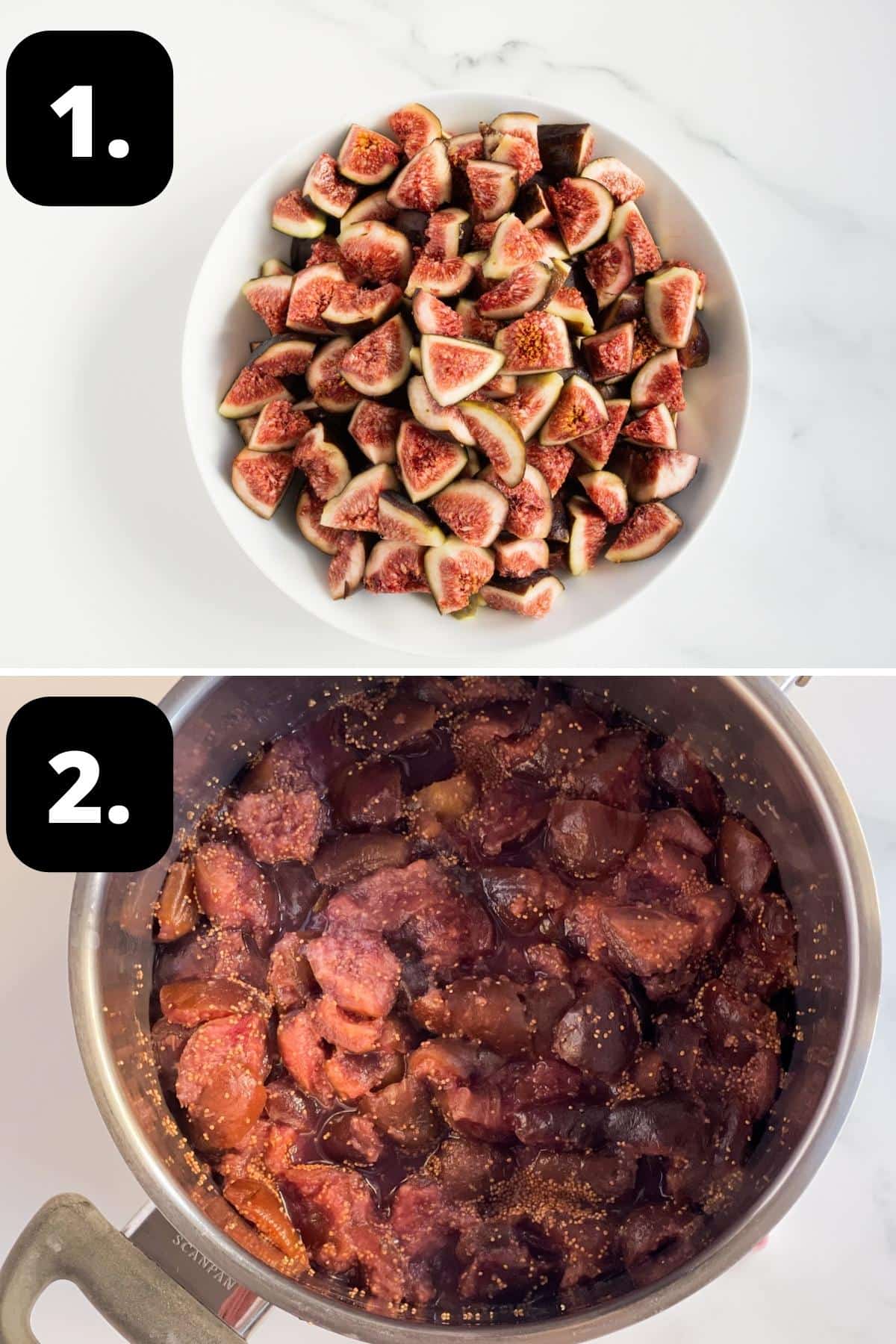
1 - Chop the figs:
Wash and dry the figs and remove the stem as well as any small blemishes.
Cut the flesh into dice about 1.5 cm (0.6 inch) and add to a large, wide saucepan, along with a small amount of water.
2 - Soften the fruit:
Over medium heat, bring it to a gentle simmer. The fruit will release liquid as the temperature rises. Cover the saucepan to avoid evaporation of the liquid.
Stir occasionally for 20 minutes, until the fruit has softened.
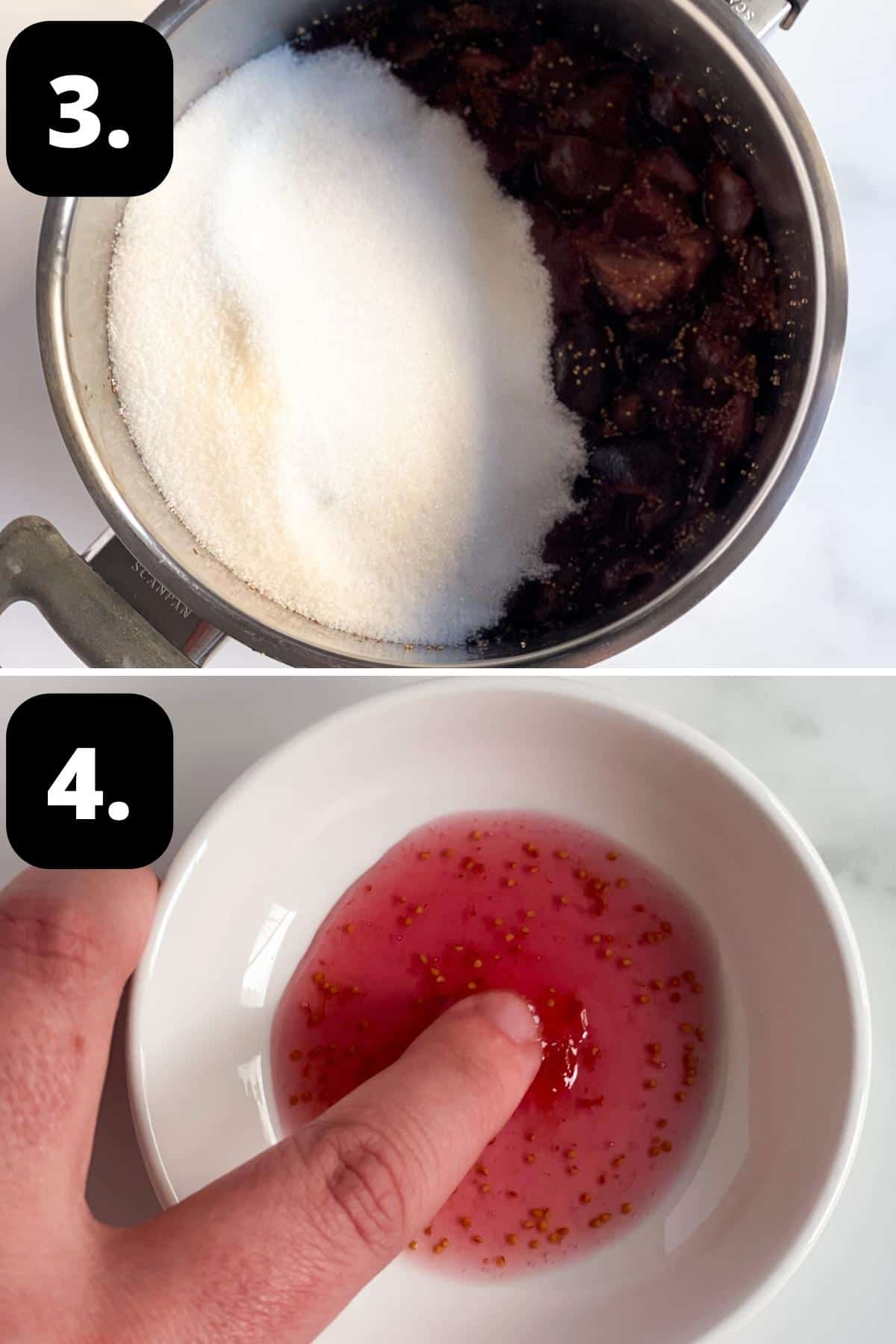
3 - Add the sugar:
Remove the lid from the jam and add the sugar. Stir frequently to dissolve the sugar. When the sugar dissolves, increase the heat and bring the mixture to a rapid boil. Stir frequently to prevent the jam from catching on the bottom of the pan.
4 - Test the Jam:
After about 12 minutes, test for setting point. I use the "wrinkle" test. More details are in the recipe below.
If you like a jam with pieces of fruit, set the saucepan aside for about 10 minutes to allow the fruit to be evenly distributed throughout the jam. If you prefer a smooth jam, use an immersion blender to blend the mixture.
Ladle the jam into the hot, sterilised jars and seal immediately.
Hint: ensure the sugar is dissolved before bringing the mixture to a boil. This will help avoid any crystallisation in the jam.
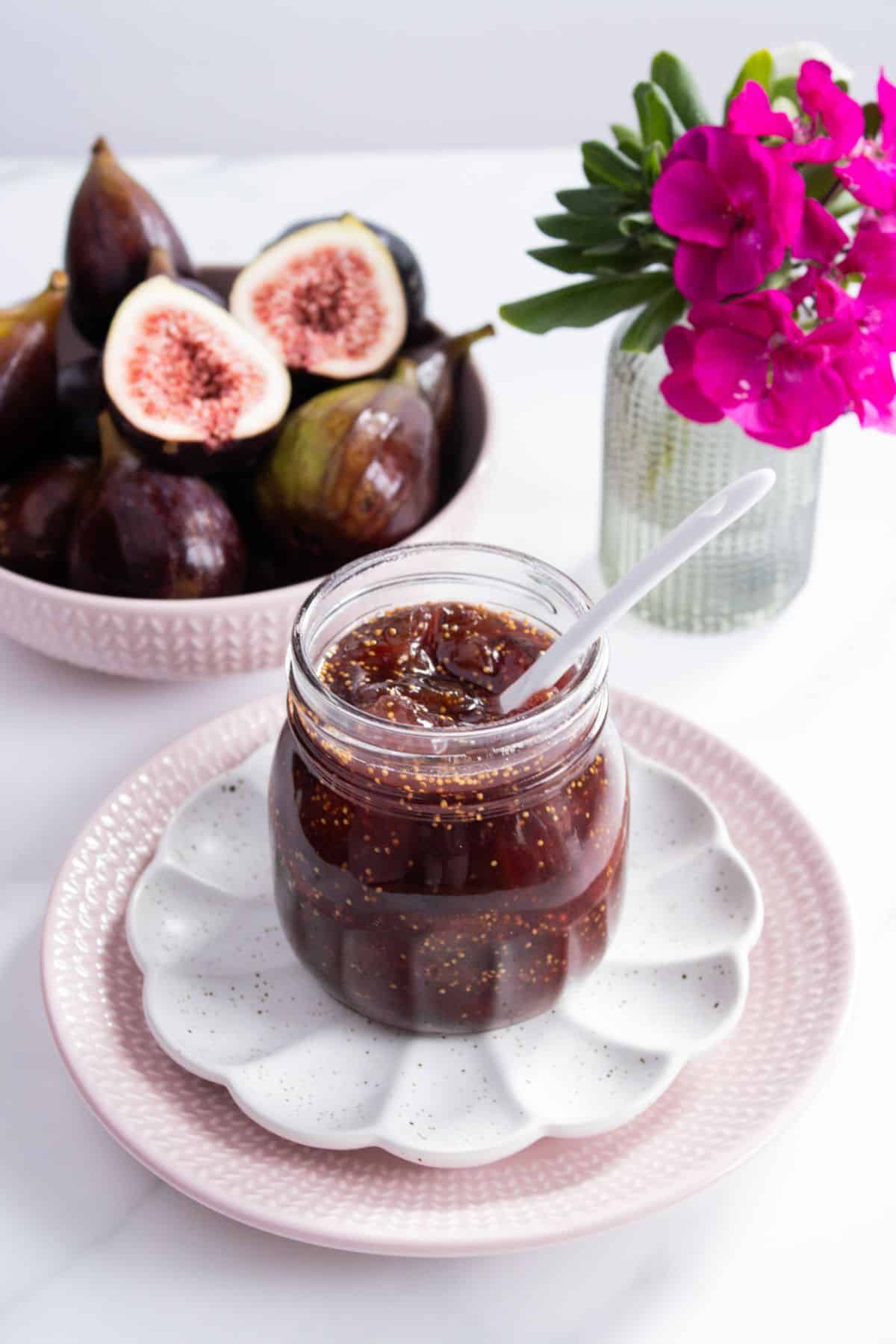
Tips for Success, Storage and FAQs:
If you follow the instructions in the recipe to thoroughly sterilise the jars you use, don't reduce the amount of sugar and cook the jam properly, the jam will be shelf-stable for a year. After opening a jar, you should store it in the fridge and be sure to always use a clean spoon to remove the jam.
Pectin is a naturally occurring starch that is found in varying degrees in fruits and vegetables. It is what makes jams and jellies firm when they are cool. When combined with acid and sugar, and cooked to a high temperature, it forms a gel. In this recipe, I add a small amount of lemon juice to boost the pectin and acid content.
Yes, you can eat the whole fruit.
Conventional jam requires a lot of sugar. When you see it weighed out, it may be slightly alarming, but please don't reduce the amount of sugar. The sugar not only sweetens the fruit but also helps the jam to set and acts as a preservative. If you reduce the sugar, your jam may not be shelf stable.
Lemon plays an important role in jam-making. It is high in acid and pectin, both essential for the setting of the jam. As well, the acidity of the lemon helps balance the sweetness.
Top Tip:
For the best result, choose good quality, freshly picked fruit. As fruit ages, it loses pectin, and it becomes more difficult to achieve setting point.
The figs should be soft and plump but not mushy. A hard, green fig will not ripen further after picking. Avoid any that are over-ripe, bruised, have split skin or smell sour. However, if you have some that are slightly unripe, don't hesitate to use them. They also assist with setting as they contain more pectin.
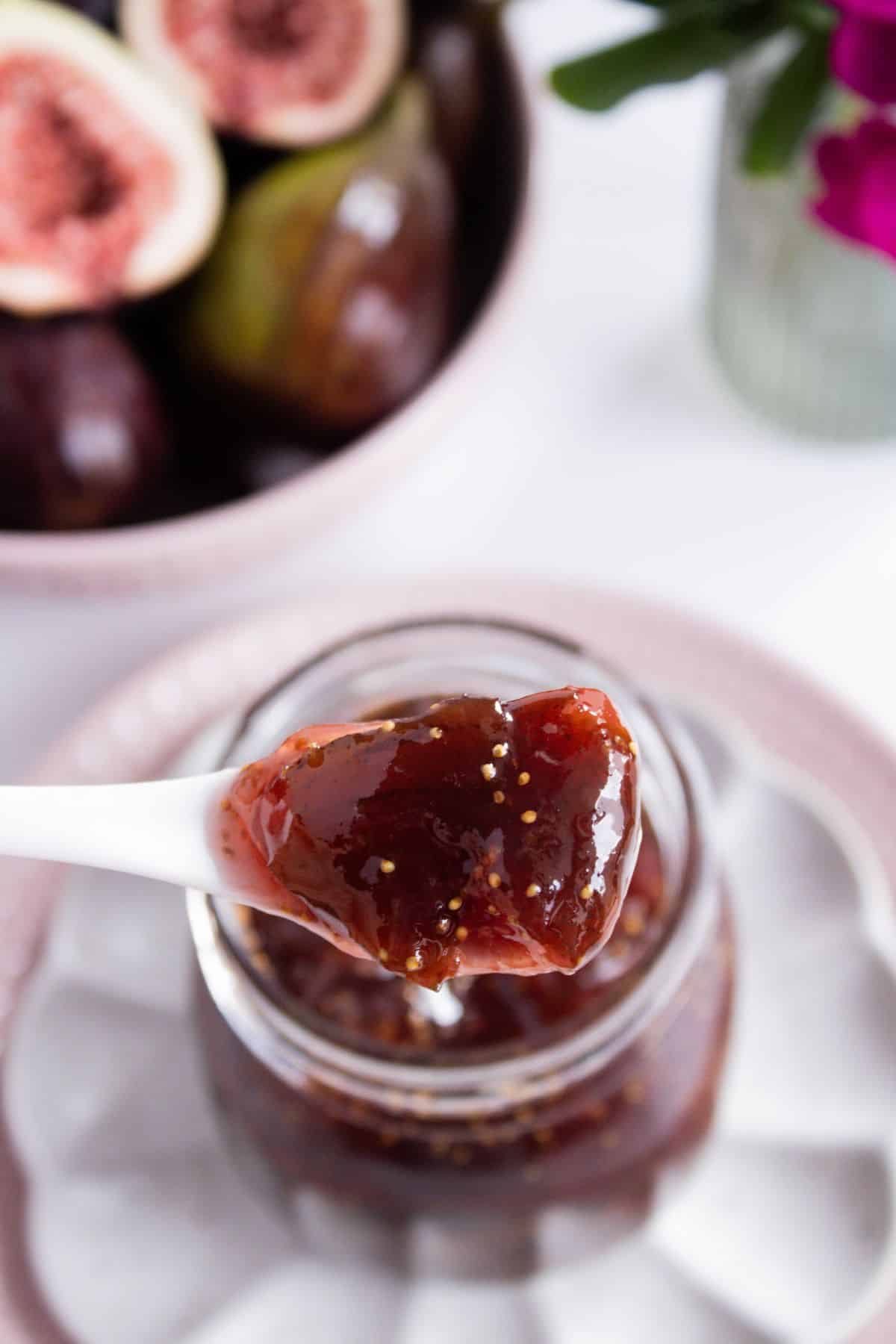
Serving Suggestions:
There are many ways to enjoy this delicious jam, in either sweet or savoury applications. Some suggestions are:
- Served with scones and cream - always a winner!
- Swirled through plain Greek yoghurt.
- On toast for breakfast.
- Add to a cheese board; it is delicious with a pungent blue cheese or a creamy ripe Brie. The salty/sweet pairing works very well.
- Topping our Oat Pancakes or Oat Flour Waffles.
- On top of porridge.
- To glaze a ham.
- As a filling in our Jam Oatmeal Bars.
- Give a jar as an edible gift.
I believe that homemade jam is a special treat, and this homemade Fig Jam is the perfect way to use this beautiful fruit at the peak of its season.
I do hope you will try this delicious jam. It is certain to become a family favourite.
Alex xx
More Delicious Recipes For You To Try:
Stay in touch!
Follow me on Facebook, Pinterest, Flipboard and Instagram and subscribe to my newsletter.
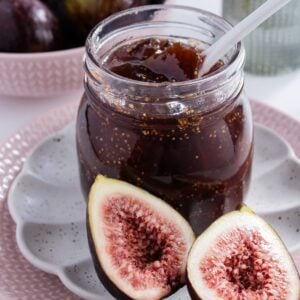
Fig Jam
Equipment
- 3 x 300 ml (10 fluid oz) Jars
Please note:
For accuracy, when weights are provided, we recommend weighing your ingredients. This will produce the best results. All oven temperatures listed are for fan forced.
Ingredients
- 800 g (28 oz) figs - prepared weight See Note 1
- 2 tablespoon (40 ml) water
- 2 ⅔ cups (600 gm) granulated sugar See Note 2
- ¼ cup (60 ml) lemon juice See Note 3
Instructions
Sterilising the Jars:
- Sterilise the jar or jars you'll be using to store the jam. Choose glass jars with an airtight, metal lid and ensure they have been washed by hand in hot soapy water then rinsed well. Check that the metal lids do not have rubber inserts – if they do, allow them to air dry, instead of placing in the oven. Preheat the oven to 130 Degrees C (270 F) and place the jars in the oven for 15-20 minutes. Keep the jars warm.
For the Fig Jam:
- Place two small saucers or plates in the freezer. (See Note 5.)
- Wash and dry the figs and remove the stem as well as any small blemishes.
- Cut the fruit in half and then half again. Roughly chop the fruit into 1.5 cm (0.6 inch) cubes.
- Add the chopped figs and water to a large saucepan over a medium-low heat. Place the lid on and bring it to a gentle simmer. Stir occasionally for 20 minutes, using a long-handled wooden spoon, until the fruit has softened. (See Notes 6 and 7.)
- Add the sugar and lemon juice to the saucepan. Stir until the sugar dissolves - this will take 3-5 minutes.If sugar crystals get caught on the side of the saucepan, scrape down with a spatula.
- Once the sugar has dissolved, increase the heat to a rolling boil.Boil for 12 minutes, stirring frequently. After 12 minutes, begin to check for the setting point. Your jam will likely take between 12-18 minutes, but it will depend on the width of your saucepan and how rapidly the jam is boiling.
- Turn off the heat and spoon a little of the jam onto one of your chilled saucers.Let it stand for 30 seconds to cool, and then run your finger through it. If it wrinkles, even slightly, it is ready. If it is still quite liquid, put it back on the heat and boil for a further 1-2 minutes, and retest until ready. Alternatively, you could use a candy thermometer. Setting point is reached when the thermometer reaches 105 Degrees C (220 F).
- Skim any scum off the top of the jam with a spoon.
- Either leave the jam to stand for ten minutes to allow the fruit to disperse evenly, or use an immersion blender to carefully blend the fruit to your desired consistency. (The photos show the jam not pureed.)
- Carefully ladle your jam into your hot jars and put the lids on immediately. Allow the jam to cool completely. Wipe the jars to remove any spills, and store the jam in a cool, dark place.
Notes
- Figs: the weight listed is the prepared weight - ie: after the stems and any blemishes have been removed. Ensure your fruit is freshly picked and of good quality. Avoid fruit that is bruised or over-ripe. The figs contain pectin, which aids in the jam setting. If your fruit is older, it will contain less pectin.
- Sugar: do not reduce the amount of sugar. Whilst the sugar sweetens the fruit, it also acts as a preservative and helps the jam to set. If you reduce the sugar, your jam may not be shelf-stable and may become mouldy.
- Lemon juice: not only balances the sweetness of the sugar, but it also contains acid and pectin, which help to set the jam.
- Sterilising the jars: properly sterilising your jars is an essential process to remove bacteria that could cause your preserves to spoil.
- Chilled plates: we use the chilled plates to quickly cool the jam when testing the setting point.
- Saucepan: I choose a large, wide saucepan that has enough height to enable the jam to boil vigorously. More surface area means the liquid will evaporate faster; having sufficient height means you can boil the jam at a higher heat and maintain the fresh flavour of the figs. Avoid aluminium, copper or iron pans; the acid in the fruit may react with the pan, giving the jam a metallic taste.
- Wooden spoon: do not use a metal spoon - it will become very hot. A long-handled wooden spoon is important to avoid being burnt by a splash from boiling jam.
- Setting point: my jam reached its setting point about 12 minutes after it began to boil rapidly. Boiling time will vary depending on the size of your saucepan and the heat that you apply.
- Immersion blender: if you prefer smooth jam, carefully use an immersion blender, once you have taken the Fig Jam off the heat. The photos show the blended jam.
- Storage: when the recipe is made according to instructions and the jars have been sterilised properly, the jam will be shelf-stable for up to a year when stored in a cool, dark place. A jar should be refrigerated after opening. This recipe has not been tested using a canning method. Please refer to the USDA Canning Guidelines for techniques, or follow a recipe designed for long-term canning.
- Nutritional information: is based on one whole jar. The nutritional information is an estimate only.
Nutrition Estimate:
Nutritional Disclaimer:
The nutritional information is an estimate only, and is derived from online calculators. For accurate results, we recommend calculating the nutritional information based on the ingredients and brands you use.

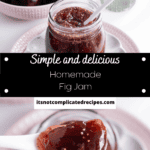
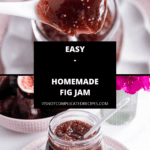
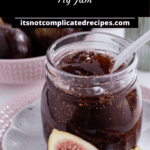
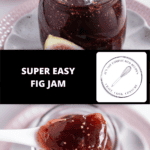
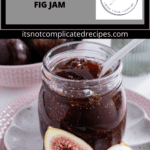
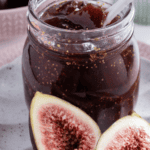
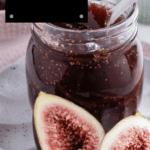



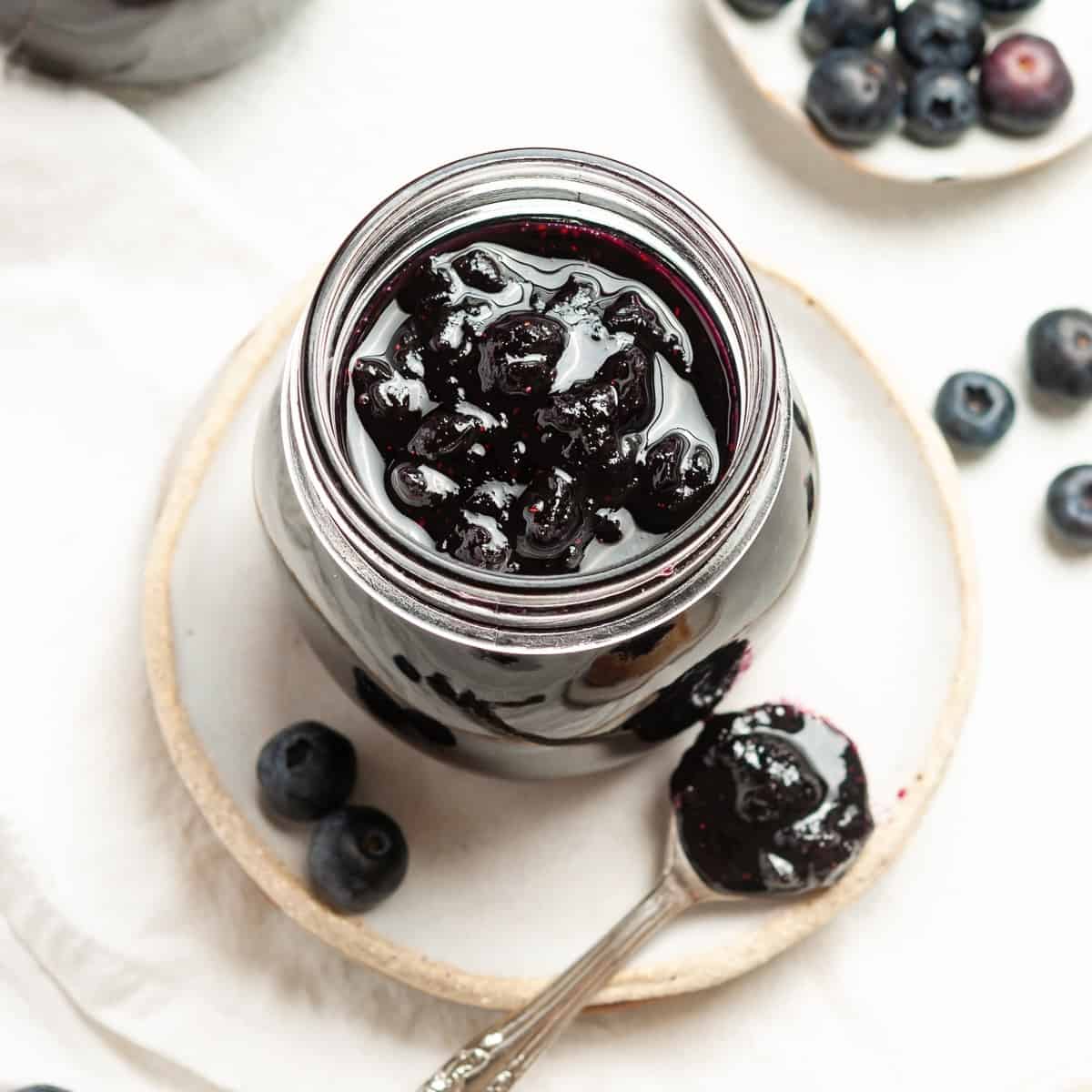
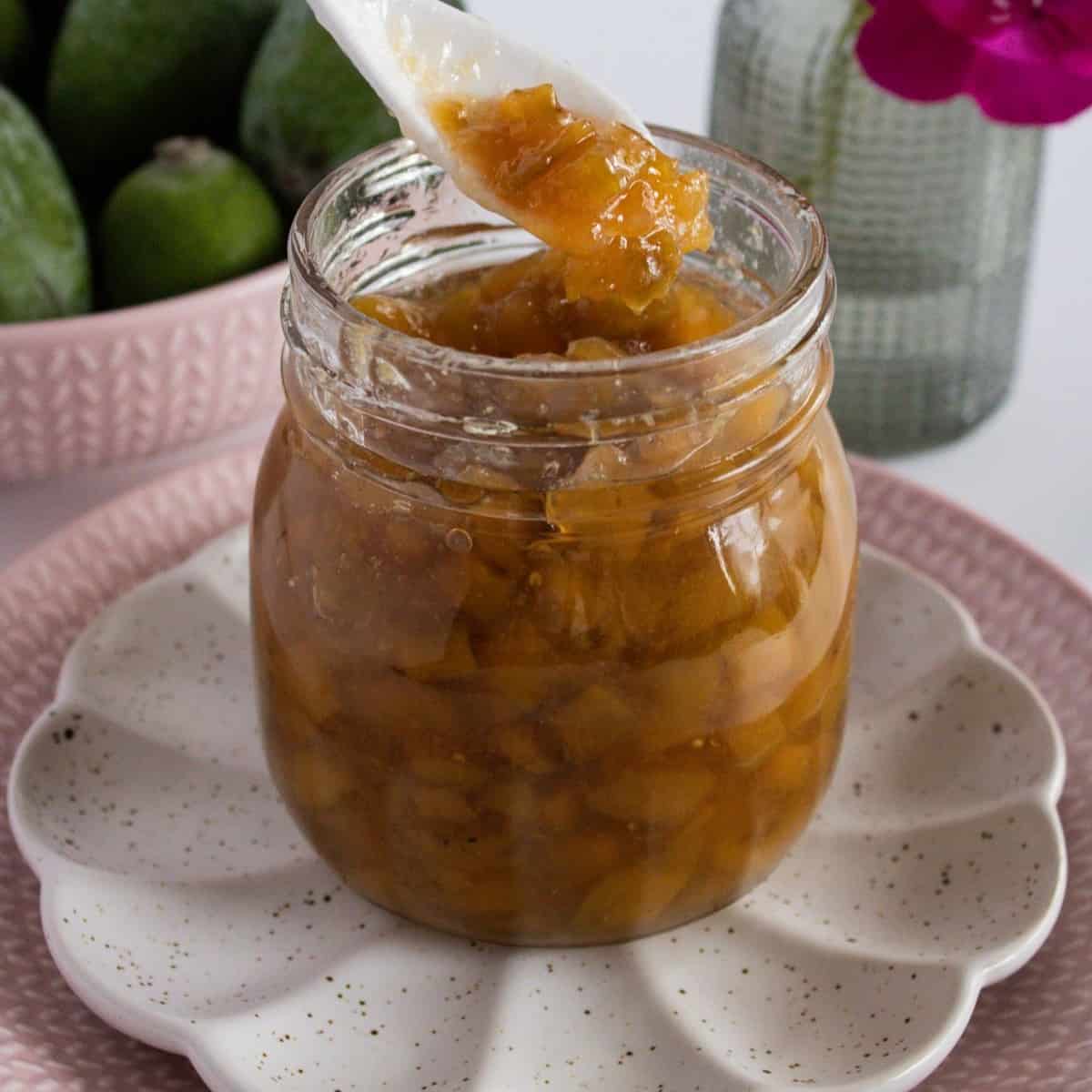
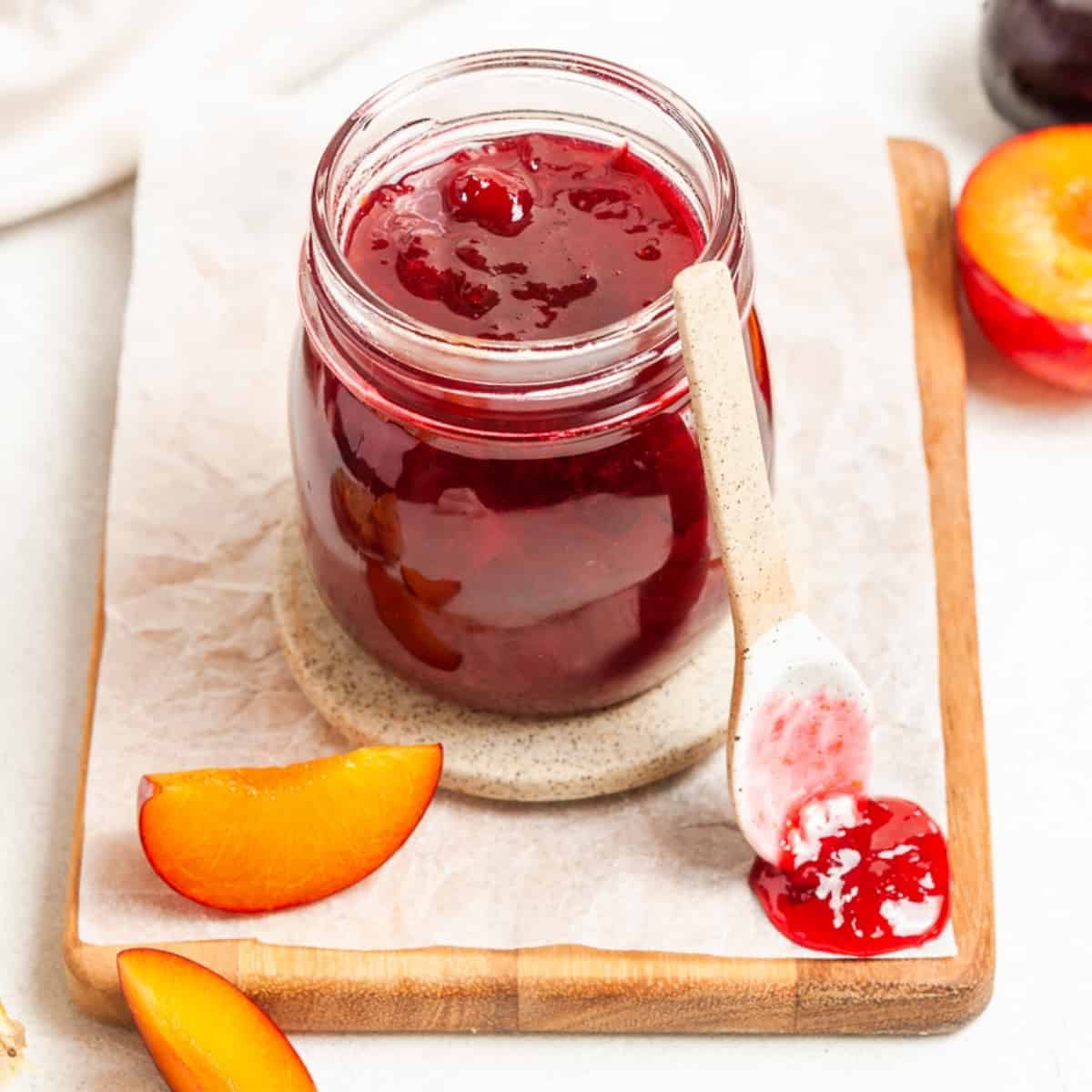
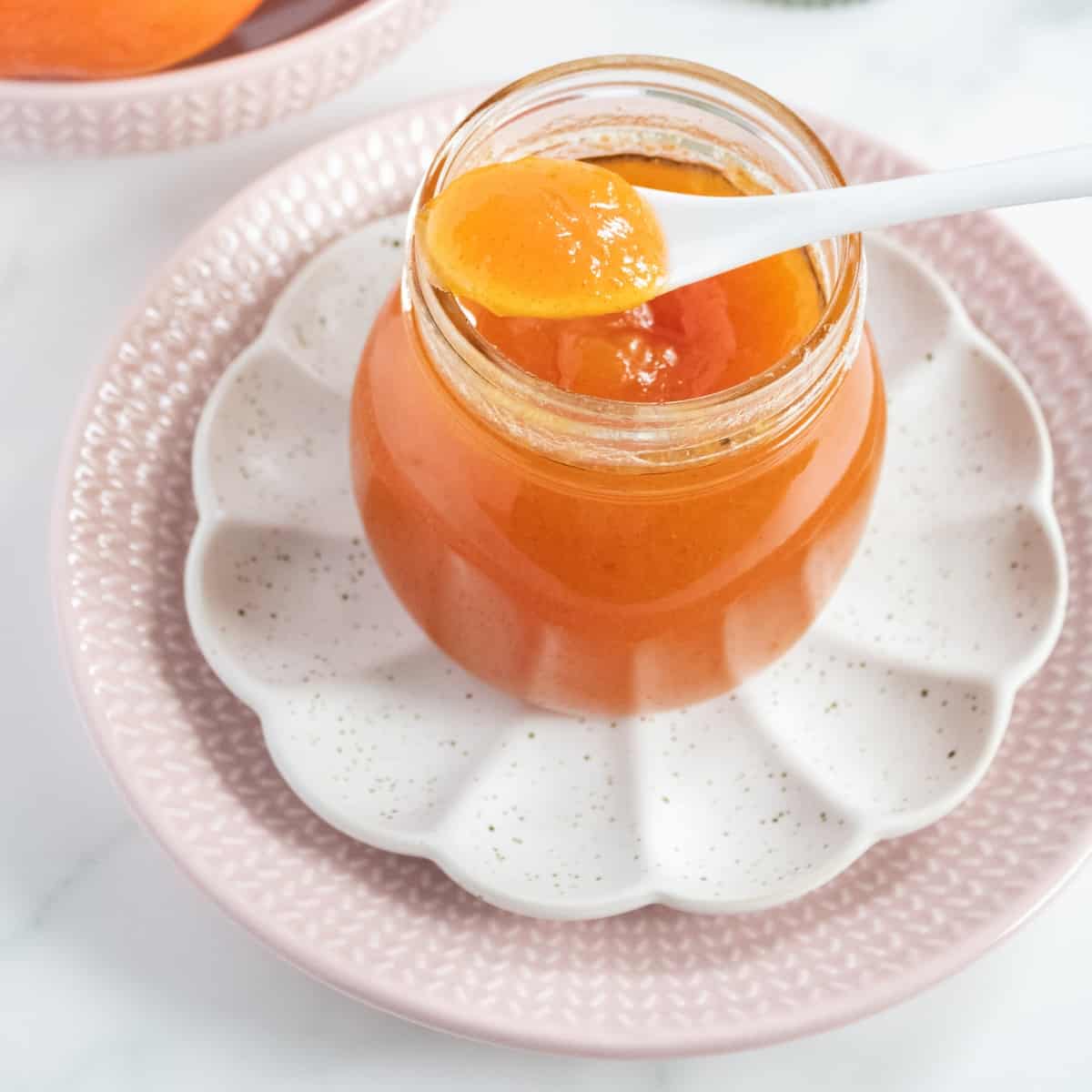
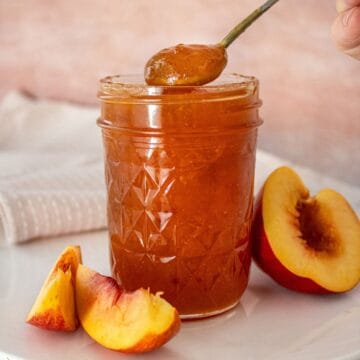
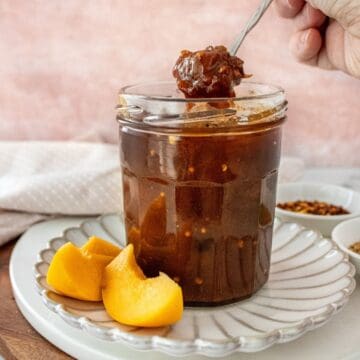
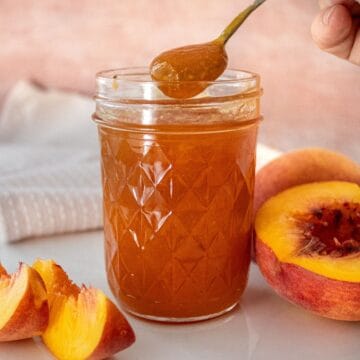
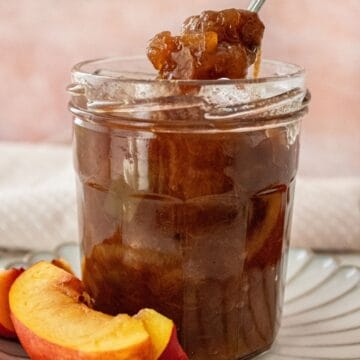
Lucy says
My third year making this jam - it is such a delight. Thank you so much for the beautiful recipe and clear instructions. Your blog is my absolute go to for recipes!
Alexandra Cook says
That is so lovely to hear, Lucy! Thank you so much for your kind words 🙂
Alex xo
Kira says
Do I add 6 Tablespoons or 60ml of Lemon Juice? The recipe uses both measurements. Also, does the Lemon Juice need to be fresh? Or is it ok to use lemon juice from a bottle?
Alexandra Cook says
Hi Kira,
Sorry for the confusion - I was just making some changes to the recipe card. It is 60 ml of lemon juice 🙂
I personally prefer fresh lemon juice as I try to avoid preservatives in my homemade preserves, but if bottled is all you have, it will absolutely work fine!
Alex xo
Lindsay says
This was so easy. And so good. Despite that, the jam is rock hard once it sits. What did I do wrong?
Alexandra Cook says
Hi Lindsay,
It sounds like it was just cooked for a little long. Did you use the cold plate test to check for setting point?
Next time, I'd try cooking it for 1-2 minutes less.
In the mean time, when you're wanting to use some, remove a little from the jar and add to a small dish with a dash of boiling water. Then give it a stir, and it should be a nice consistency for you 🙂
Alex xo
Lindsay says
You’re right! Second batch was perfect! Thank you!
Alexandra Cook says
Great to hear, Lindsay 🙂
F T says
I added 1 tsp of vanilla nd 2 tsp of bourbon whiskey before I filled the
jars. The taste is fantastic.
Alexandra Cook says
Yum! That sounds delicious.
Thank you for sharing 🙂
Alex xo
Erin says
Can you use dried figs with this recipe?
Alexandra Cook says
Hi Erin,
I've not tested this before. As the ingredient quantities could vary, I'd recommend looking for a recipe that specifically uses dried figs for the best results. 🙂 Alex xo
Geraldine says
No fuss recipe easy and delicious fig jam.
Alexandra Cook says
Thank you, Geraldine! 🙂
Alex xo
Lucy P. says
I've been on a roll making some preserves this past week (also made your lemon marmalade and zucchini.) Just made my second batch of fig jam and it is incredible. I moved into a house with a fig tree a few weeks ago, and definitely making the most of it!!
Alexandra Cook says
Hi Lucy,
A fig tree is wonderful!! I would definitely make the most of that too 🙂
So happy you have enjoyed this recipe and made it twice so far.
Appreciate you trying the other recipes too, and I hope you'll find many more to try on the blog also!
Alex xo
Christine Spry says
It was perfect. I added some finely chopped crystallised stem ginger also, it was delicious 😃
Thanks for the recipe
Alexandra Cook says
Hi Christine,
Love the addition of the ginger. So happy you enjoyed the recipe 🙂
Alex xo
Lucy says
I love this wonderful homemade fig jam - easy and delicious to make. Thank you!
Alexandra Cook says
Hi Lucy,
I am so happy you enjoyed this recipe - thanks so much for sharing! Alex xo